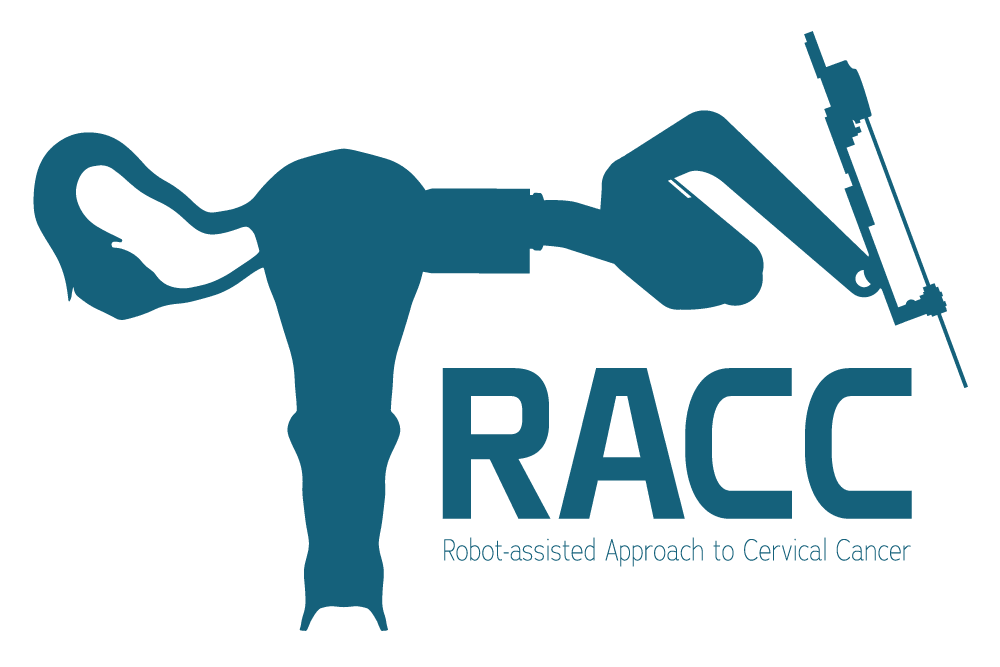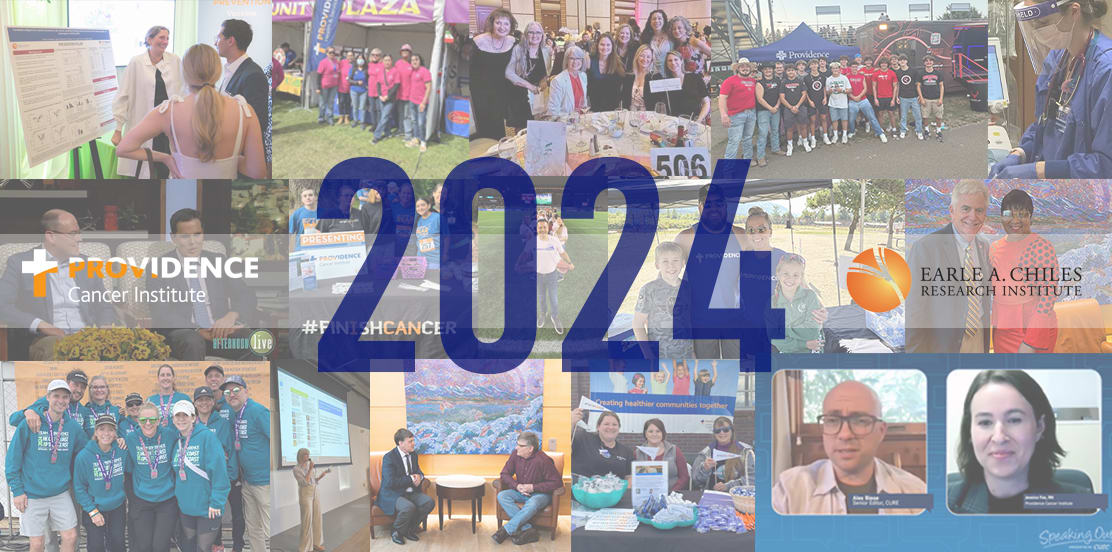Urologic Cancer Care
When you’re a patient at Providence, we don’t just treat your urologic cancer – we treat you. We use the most advanced treatments to create a highly personalized care plan. We also support you and your loved ones with a full range of services throughout your entire cancer journey. The result is effective, whole-person care for your body, mind and spirit.
Why Choose Us for Urologic Cancer Care?
At Providence, we see the life in you. Together, let’s finish cancer – so you don’t have to miss any of life’s special moments.
About Urologic Cancer
Urologic cancers form in the urinary tract organs. Some urologic cancers, such as bladder cancer, can occur in both men and women, while others, such as testicular cancer, are gender specific. The expert oncology teams at Providence use the most effective therapies to treat patients with every type of urologic cancer and its related conditions, including:
Testing and Diagnostics

Diagnostic tools help our cancer clinicians determine which therapies will work best for each patient, based on many factors like cancer type and the genetic or molecular profile of the tumor. Your doctors will use multiple advanced diagnostic and prognostic tools to help design your individualized treatment plan. Depending on your case, this may include one or more of the following:
- Biopsy
- Fine needle aspiration (FNA) biopsy
- Genetics and genomics
- MRI
- Prostate cancer screening
- Prostate-specific membrane antigen (PSMA) PET/CT scan Note: This advanced therapy is not available at all Providence locations.
Personalized Treatment for Urologic Cancer
We take a team approach to your urologic cancer treatment because we know this offers the best success in controlling and curing cancer. Your multidisciplinary cancer care team will work with you to design an individualized cancer care plan, from diagnosis to post-treatment support. We offer many different therapies across our Providence locations. Depending on your condition, your personal care plan may include one or more of the following:
Systemic therapies travel through the bloodstream and affect cells in other body parts. They are used for patients whose cancer has spread to other areas of the body or if there’s a high risk of spread. Sophisticated genetic analysis allows us to target therapies to specific DNA mutations that cause cancer cells to develop and grow. Systemic therapies include:
Chemotherapy is the systemic use of cytotoxic chemicals to kill cancer cells. Today there are many medications (e.g., biological medications, immune treatments, targeted therapies) that do not fit the classic definition of chemotherapy yet are often included in this category.
Clinical trials represent research protocols that include the use of new drugs or drug combinations in a specific clinical situation.
Hormone therapy is the use of drugs that inhibit the production or block the effect of certain hormones (usually sex hormones), helping to control cancer-cell growth.
Immunotherapy uses drugs to allow the body’s own immune system to more effectively find and destroy cancer cells.
Molecularly targeted therapy is the use of drugs that are molecularly targeted at a genetic mutation that has allowed the cancer to grow. This therapy enables personalized treatments for patients who carry certain genetic mutations or abnormalities.
Radioligand therapy is a systemic therapy in which a radioisotope is attached to an antibody directed at a specific cancer cell. This targeted treatment delivery maximizes cancer control while minimizing side effects.
Radiation therapy uses high-energy radiation from a source like X-rays or photons to kill cancer cells or shrink tumors. It may be part of a treatment plan that also includes systemic therapies and/or surgery. Radiation is sometimes used to help ease a patient’s pain or discomfort. Radiation therapies include:
Brachytherapy is an approach to delivering radiation treatment from a source implanted inside the body. These sources may be placed either permanently or temporarily at the tumor site.
By delivering radiation directly into a tumor, this technique spares the surrounding normal tissue any exposure to radiation and the side effects that it may bring.
This advanced procedure requires a sophisticated facility and equipment, along with highly specialized physicians and support. It is available at some Providence locations.
Interstitial high-dose rate (HDR) brachytherapy is a specialized brachytherapy technique in which rapidly emitting radiation sources are placed briefly inside the body through a needle catheter to irradiate the target tumor.
By delivering high-dose radiation directly into a tumor, this technique can reduce the number of treatments needed for a patient. The surrounding normal tissue is spared exposure to radiation and the side effects that it may bring.
This advanced procedure requires a sophisticated facility and equipment, along with highly specialized physicians and support. It is available at some Providence locations.
Intensity-modulated radiation therapy (IMRT) and volumetric-modulated arc therapy (VMAT) are advanced types of radiation therapies. IMRT uses advanced technology to manipulate the radiation beams to conform to the shape of a tumor. VMAT is a subtype of IMRT in which the machine actively delivers radiation beams while moving in an arc around the patient.
This method of radiation delivery offers next-generation capabilities. The arc-based therapy provided via VMAT delivers high doses of radiation to more focused areas, reducing side effects and the overall treatment time for the patient. This treatment is particularly effective at treating several types of cancer while at the same time reducing toxicity and harm to vital organs.
This procedure is one of several new ways to deliver radiation therapy. It requires a sophisticated facility and equipment, along with highly specialized physicians. It is available at some Providence locations.
Stereotactic radiation (SABR/SBRT) is a group of treatments that includes stereotactic body radiation therapy (SBRT) and stereotactic ablative radiation (SABR) – both of which are adaptations of stereotactic radiosurgery (SRS) – for the treatment of targets in the body, but outside the brain. Similar to SRS, these techniques deliver very high doses of radiation using sophisticated motion management and patient immobilization techniques.
The number of radiation treatments is minimal and may range from one to five treatments delivered over one to two weeks.
This procedure is one of several new ways to deliver radiation therapy. It requires a sophisticated facility and equipment, along with highly specialized physicians. It is available at some Providence locations.
Radiopharmaceuticals (Lu-177) is a radioisotope that is combined with a delivery molecule to specifically target a type of cancer cell in some neuroendocrine tumors and prostate cancers. This radiopharmaceutical compound simulates the action of a naturally occurring substance and binds to cancer cells. This interaction slows the growth of cancer cells, while at the same time working to destroy them using a radioactive particle inside the cell to damage the cancer cells’ DNA.
The elegance of this therapy lies in its ability to bind the medication directly to cancer cells and to apply radiation from inside the cancer cell – thus delivering a potent dose that does not penetrate very far, thereby sparing normal adjacent healthy cells.
This procedure is one of several new ways to deliver radiation therapy intravenously. It requires a sophisticated facility and equipment, along with highly specialized and licensed physicians. It is available at some Providence locations.
Three-dimensional conformal radiation therapy (3DCRT) is a radiation planning and treatment technique in which three-dimensional (3D) imaging enables improved targeting for radiation treatment. 3D planning with CT imaging makes radiation treatment much more conformal, or tailored to the target.
Find Urologic Cancer Care Close to You
Accreditations
We are proud to see our dedication to our cancer patients recognized by some of the most well-respected programs and institutions in the United States. Several of our Providence locations have achieved the following accreditations:
- Accountable Care Organizations (ACO) Accreditation – National Committee for Quality Assurance (NCQA)
- American College of Radiology (ACR) Accreditation
- Accreditation Program for Excellence (APEx) – American Society of Radiation Oncology (ASTRO)
- Commission on Cancer (CoC) Accreditation – American College of Surgeons (ACS)
- Integrated Network Cancer Program (INCP) – American College of Surgeons (ACS)
- Quality Oncology Practice Initiative (QOPI) Certification – American Society of Clinical Oncology (ASCO)
Meet the Team
At Providence, you'll have access to a vast network of dedicated and compassionate providers who offer personalized care by focusing on treatment, prevention and health education.

Find Clinical Trials
Are you looking for a clinical trial for yourself or for a patient? We’d love to help you find one!
Find Care
Expert Tips and Advice for Cancer





